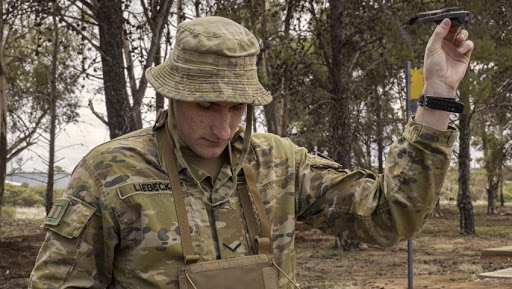The 7th Battalion, Royal Australian Regiment has begun qualifying soldiers on the Black Hornet NUAS (nano unmanned aerial system).
To continue reading the rest of this article, please log in.
Create free account to get unlimited news articles and more!
The Black Hornet is a small helicopter-style drone used to capture real-time imagery to a remote control operator through a handheld system.
The Black Hornet capability has been implemented to assist every level of command to align the battalion to the Army’s Accelerated Warfare directive.
Speaking with Defence News, Lieutenant Liam O’Malley, who oversaw the training, said the NUAS capability can help to improve the decision-making process by providing information that could aid in the formulation of plans.
“The NUAS allows us to gather information at longer ranges when compared with traditional organic sensors such as binoculars,” LT O’Malley said.
“Tactically, the NUAS is available at the section level and gives situational awareness to the section commander. But how do we use it? It’s capable of extending out to two kilometres, however it is better suited to close urban terrain.”
LT O’Malley said it will allow low-level immediate situational awareness, reducing risk to the soldier when conducting reconnaissance.
Additionally, the soldier can easily clear vulnerable points visually and safely conduct close-target reconnaissance without the need to physically move into a potential enemy position.
The 7th Battalion has used the current low-tempo period to train soldiers on the Black Hornet capabilities and implement scenario-based training to enhance section-level tactics and develop standard operating procedures.
After qualifying on the course as a drone operator, Lance Corporal Ash-Leigh Liebeck said he was excited to use the technology in the field on future exercises.
“I am looking forward to having ownership of a nifty bit of kit, and it’s exciting to think about what we can do with it in the near future,” LCPL Liebeck said.
The newly qualified pilot said the course involved a series of tests to become qualified.
“Basic testing sees the operator navigate the drone to checkpoints while the drone can be seen by the operator,” LCPL Liebeck said.
“Advanced testing includes out-of-sight flight and movement through urban areas, including room-to-room recon.”

 Login
Login







